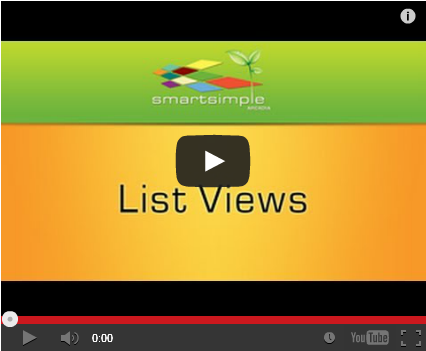Difference between revisions of "Configuring List Views"
From SmartWiki
(→Defining a List View) |
|||
| Line 19: | Line 19: | ||
====Columns==== | ====Columns==== | ||
| − | |||
| − | |||
| − | |||
| − | |||
| − | |||
| − | |||
| − | |||
| − | |||
| − | |||
{{ListViewFooter}} | {{ListViewFooter}} | ||
Revision as of 12:41, 22 April 2013
 Click here to watch a video on creating and editing List Views.
Click here to watch a video on creating and editing List Views.
Defining a List View
There are two types of List Views: System Views and Personal Views.
- System Views belong to a specific role. All users in that role will have the option to select this List View. Multiple System Views can be defined for each role.
- Personal Views are only visible to the user who creates them. Multiple Personal Views can be defined for each user.
System Views
- When you click on the "New System View" button, you will be prompted to select the role to which the System View pertains. Select the appropriate role and click "OK."
- You will now see three tabs in the right-hand frame: Properties, Columns and Export.
Properties
- By default, the "View Name" will match the role that you have selected. The name of the list view can be edited.
- Select a display order. This will define which list view will be the default for users who possess multiple roles.
- The default value for the "Open Button Label" is "Open." Changing this value will change the caption on the button used to access a specific record in the list view.
- Checking the "Open in edit mode" option will mean that when records are opened, they will default to edit mode as opposed to view mode.
Columns
See Also
- List View Overview
- Accessing the List View Configuration Page
- Configuring List Views
- Setting the Sort Order on a List View
- Exporting List View Results to Microsoft Excel
- Exporting List View Results to Microsoft Word
- Download files from List View
- Preparing Existing Word Template for List View Export
- Quick Edit
- Historic List View
- Configuring Interactive List View Charts